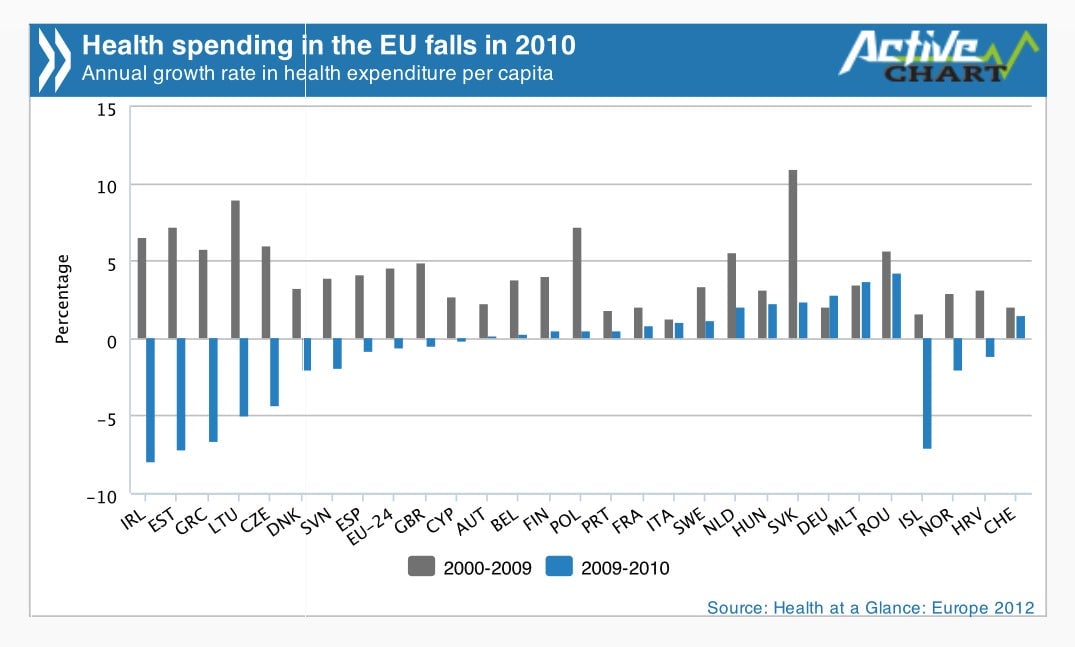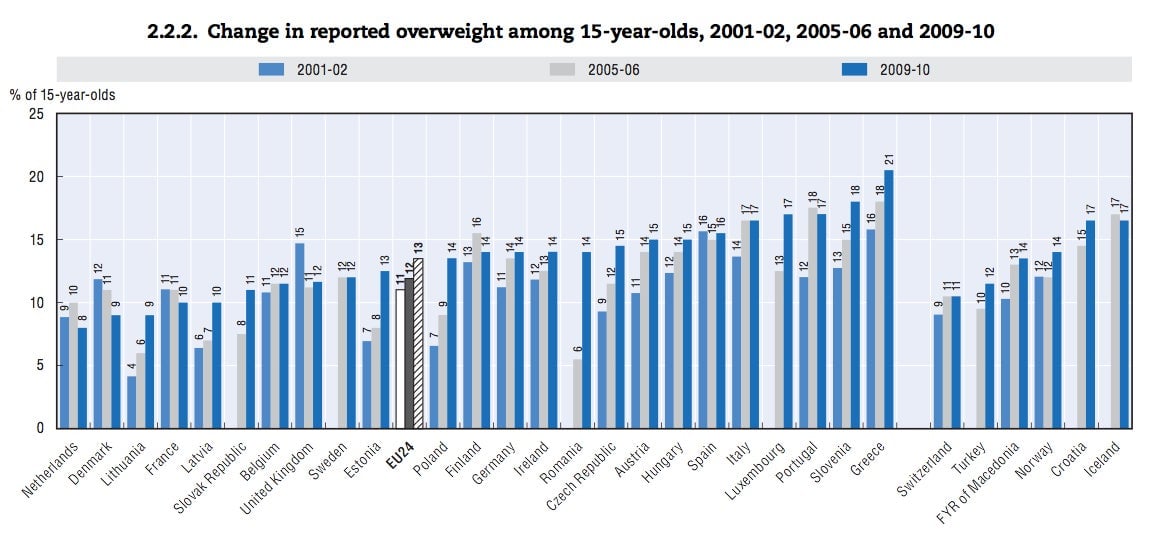Here’s what Europe is spending less on while Europeans get bigger and, as a result, sicker: healthcare
A new report (pdf) shows what we already knew, but would prefer not to think about: health care spending is falling across Europe at a time when Europeans really could use the money. It’s the first time since 1975 that overall health care spending has fallen across the 27 European Union (EU) countries, according to a new report from the OECD and the European Commission. In 2010, health spending per capita fell -0.6% as cash-strapped governments struggled to balance budgets. This compares to an average growth rate on per capital health care spending of 4.6% between 2000 and 2009. On average, EU countries spent 9.0% of GDP on healthcare in 2010, an increase over 7.3% spent in 2000, but down from 9.2% in 2009.

A new report (pdf) shows what we already knew, but would prefer not to think about: health care spending is falling across Europe at a time when Europeans really could use the money. It’s the first time since 1975 that overall health care spending has fallen across the 27 European Union (EU) countries, according to a new report from the OECD and the European Commission. In 2010, health spending per capita fell -0.6% as cash-strapped governments struggled to balance budgets. This compares to an average growth rate on per capital health care spending of 4.6% between 2000 and 2009. On average, EU countries spent 9.0% of GDP on healthcare in 2010, an increase over 7.3% spent in 2000, but down from 9.2% in 2009.
EU governments have cut primarily from public health and prevention programs. In 2010, only 3% on average of health budgets was devoted to prevention and public health programs, in areas including immunization, smoking, alcohol drinking, nutrition, and physical activity—even though spending on prevention is estimated to be more cost-effective than treating diseases down the road. The cuts come as incidences of many of these problems continue to rise—obesity in particular.
More than half of adults in the EU are considered overweight, while 17% are obese. Obesity rates have doubled since 1990 in many European countries, ranging from 8% in Romania and Switzerland to more than 25% in Hungary and the UK. Meanwhile diabetes, an obesity-related illness, is becoming a bigger problem in terms of cases and costs, with an estimated 31 million people diagnosed in Europe.
Other report highlights, both good and bad:

People are living longer. Life expectancy at birth between 1980 and 2010 increased by more than six years. Between 2008-2010, life expectancy at birth for men was 75.3 years and 81.7 years for women. France had the highest life expectancy for women (85 years), and Sweden for men (79.4 years). Life expectancy at birth in the EU was lowest in Bulgaria and Romania for women (77.3 years), and Lithuania for men (67.3 years).
Cases of chronic diseases such as diabetes, asthma, and dementia are increasing. This could be the result of better diagnosis or more underlying disease. Meanwhile, survival rates from various types of cancer have improved.
Europeans are smoking less. This could be due to increased awareness of the evils of smoking through public awareness campaigns, or because of advertising bans and higher taxes. The percentage of adult daily smokers is less than 15% in Sweden and Iceland, from more than 30% in 1980. Meanwhile, more than 30% of adults in Greece smoke daily. Smoking rates also remain high in Bulgaria, Ireland, and Latvia.
European are drinking less alcohol. Like with smoking, this could be due to curbs on advertising, sales restrictions, and taxation. Traditional wine-producing countries, such as France, Italy, and Spain, have seen consumption per capita fall substantially since 1980, while alcohol consumption per adult rose significantly in other countries including Cyprus, Finland, and Ireland.
More people are overweight or obese. In the European Union, 52% of the adult population is now overweight, of which 17% is obese. Teens are increasingly obese as well. The percentages increased to 13% from 11% of 15-year-olds between 2001-02 and 2009-10. The biggest increases during the eight year period were found in the Czech Republic, Estonia, Poland, Romania and Slovenia, all greater than 5%.
Here’s where things stand for 15-year-olds at a glance, which doesn’t bode well for the future.